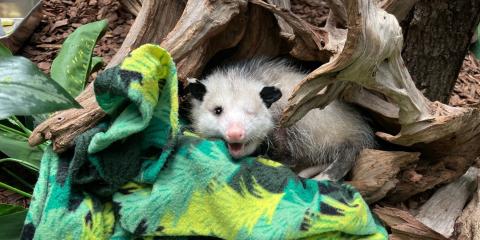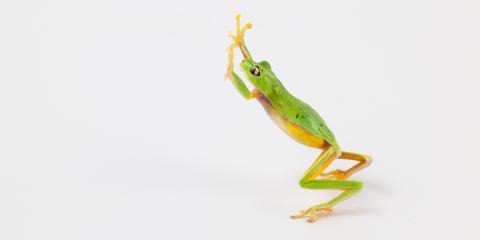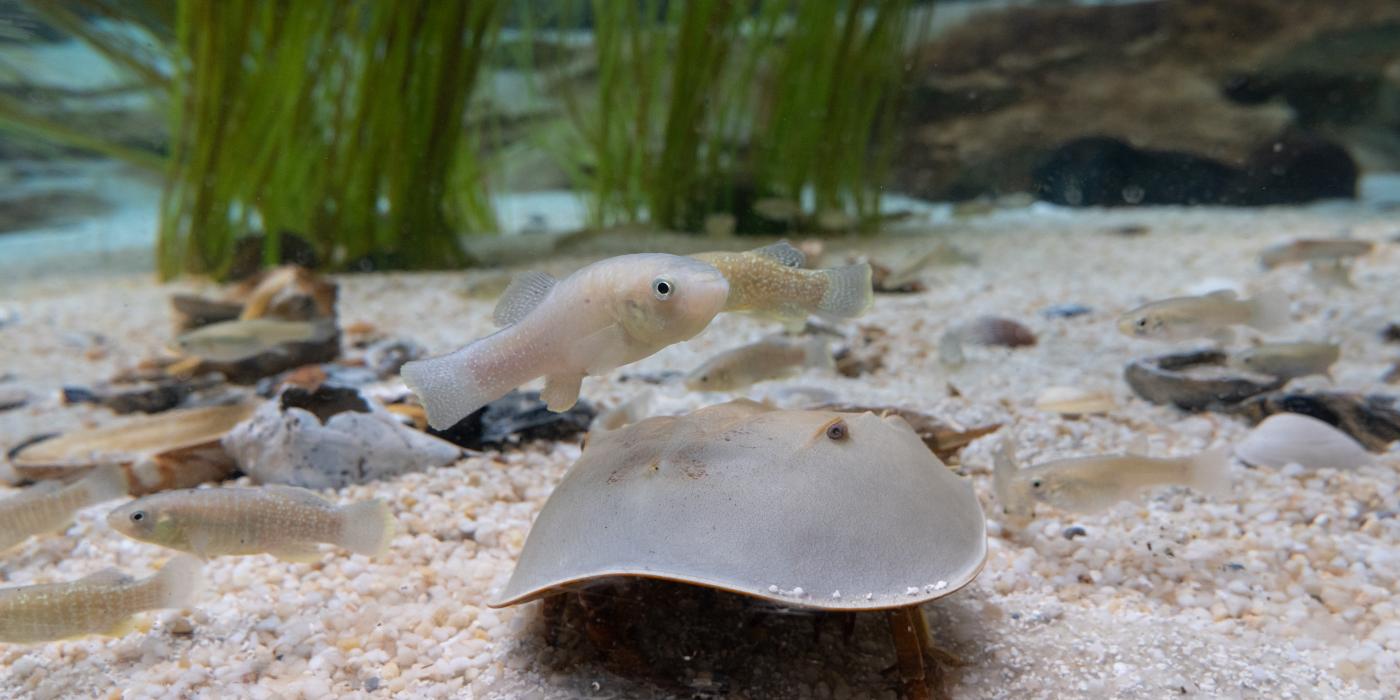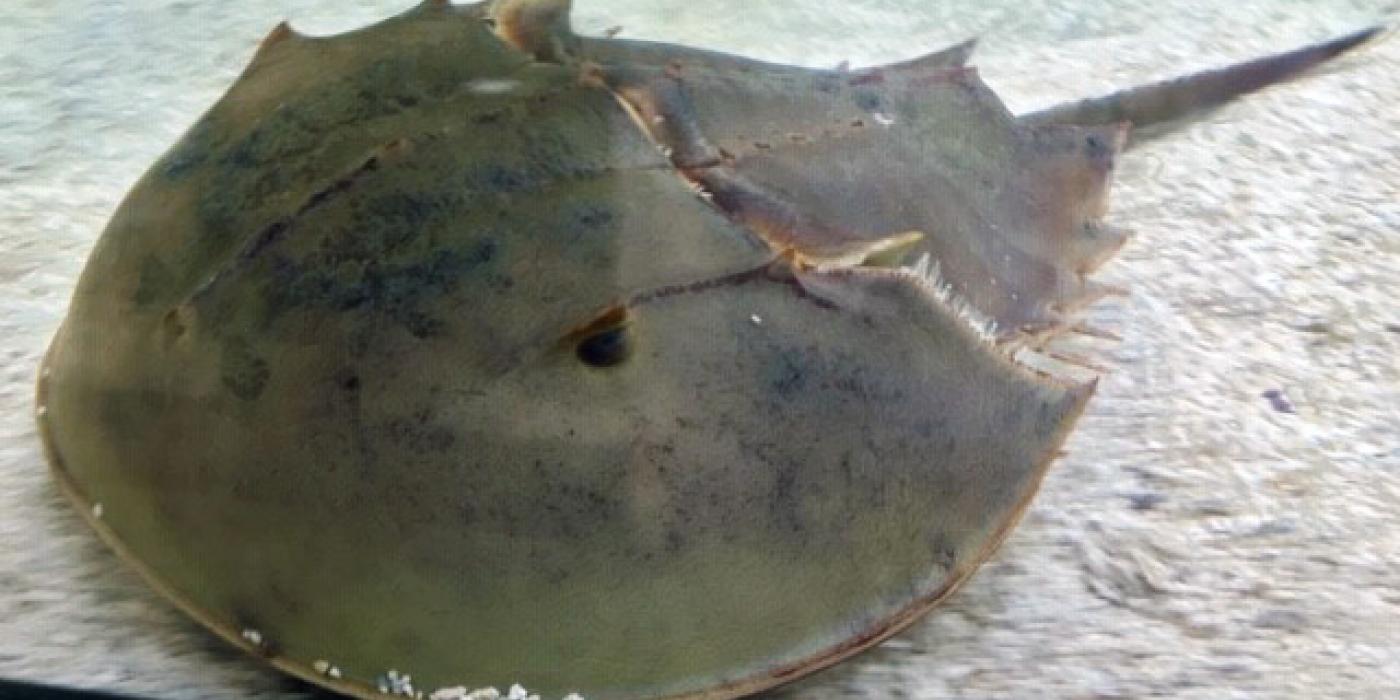Physical Description
Though it’s called a crab, horseshoe crabs are more closely related to arachnids, such as spiders and scorpions. Like those animals, horseshoe crabs have hard exoskeletons called carapaces. The hoof shape of their bodies is where they get their name.
Their dome-shaped bodies sport two eyes on their tops, with several sets of legs on their undersides. Their primary legs help them move. Another pair of legs close to their mouth acts like pincers, used to pick up and crush food.They also have smaller sets of eyes located towards the front of their carapace as well as light sensing ability on their tails and underparts of their body.
Their tails, called telsons, are neither spiked like stingray tails, nor are they venomous or poisonous. Instead, they use their telsons to flip themselves right-side up in case they get flipped on their backs. However, they can also swim upside-down if they want to.
Size
Horseshoe crabs do not reach adulthood until they are 10 years old. Their maximum size is up to 2 feet (60 centimeters), including their tail.
Native Habitat
They are most often found in shallow coastal waters with sandy or muddy bottoms. Their range is along Atlantic coastline of North America, stretching from the Yucatan Peninsula in Mexico to the Gulf of Maine in the United States.
Lifespan
In the wild, they can live for 20 years or more.
Food/Eating Habits
Horseshoe crabs eat worms, crustaceans, small mollusks and algae. They use their chelicerae—the little grabbing appendages around their mouths—to pick up food, which is then passed back to their bristle teeth for chewing and then back up to their mouths for swallowing. Bigger horseshoe crabs eat mollusks, while smaller ones tend to eat prey that is softer and easier to catch.
Sleep Habits
They eat at night. They have nine eyes near their tail, giving them exceptionally good vision even in low light.
Social Structure
Except for the breeding season, horseshoe crabs lead solitary lives.
Reproduction and Development
During full moon nights primarily in May and June, new moon nights and some high tide nights in spring, hundreds of thousands of horseshoe crabs crawl up the shoreline along the Atlantic coast to mate and lay their eggs. Females lay around 4,000 eggs in clusters. She will do this a number of times until she has laid 20,000 eggs a night and up to 100,000 each season. Most of these eggs will not survive to maturity; they are an important food source for sea turtles, fish and migratory birds.
Horseshoe crab babies look just like adults, but with soft, transparent shells. They will molt up to 16 times before they are full-grown.
Conservation Efforts
In the mid-20th century, doctors discovered that horseshoe crab blood is a valuable research compound due to the presence of important immune cells that scientists can use to test vaccines and drugs. Every year, hundreds of thousands of horseshoe crabs are trapped and bled of 10 to 30% of their blood. Quotas on their collection are meant to protect the crabs' population, as research shows that some of them die after being bled and returned to the ocean. Horseshoe crabs are also threatened by habitat degradation. They are also overharvested for bait in eel and whelk fishing. Some states have banned or set limits on harvesting, but the decline of the Atlantic horseshoe crab population is directly related to the massive decline of North American migratory shorebirds. Ending the harvest of horseshoe crabs is critical to the survival of migratory shorebirds.
Help this Species
- Practice ecotourism by being an advocate for the environment when you’re on vacation. During your travels, support, visit or volunteer with organizations that protect wildlife. Shop smart too! Avoid buying products made from animals, which could support poaching and the illegal wildlife trade.
- Share the story of this animal with others. Simply raising awareness about this species can contribute to its overall protection.
- Share the story of this animal with others. Simply increasing awareness and educating others about the threats invasive species pose to local ecosystems can help protect native environments.
Animal News

Remembering Basil, Our Virginia Opossum



